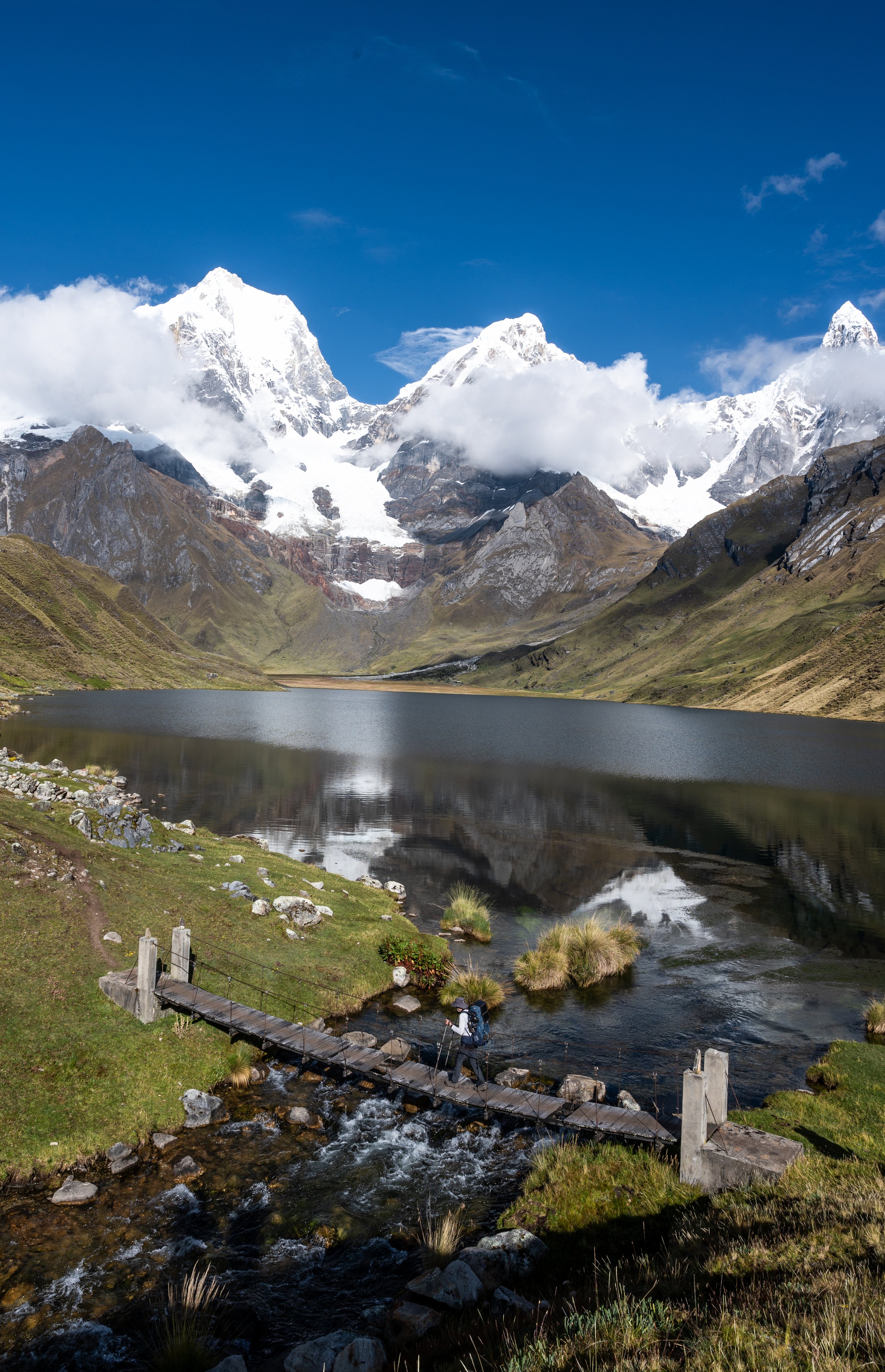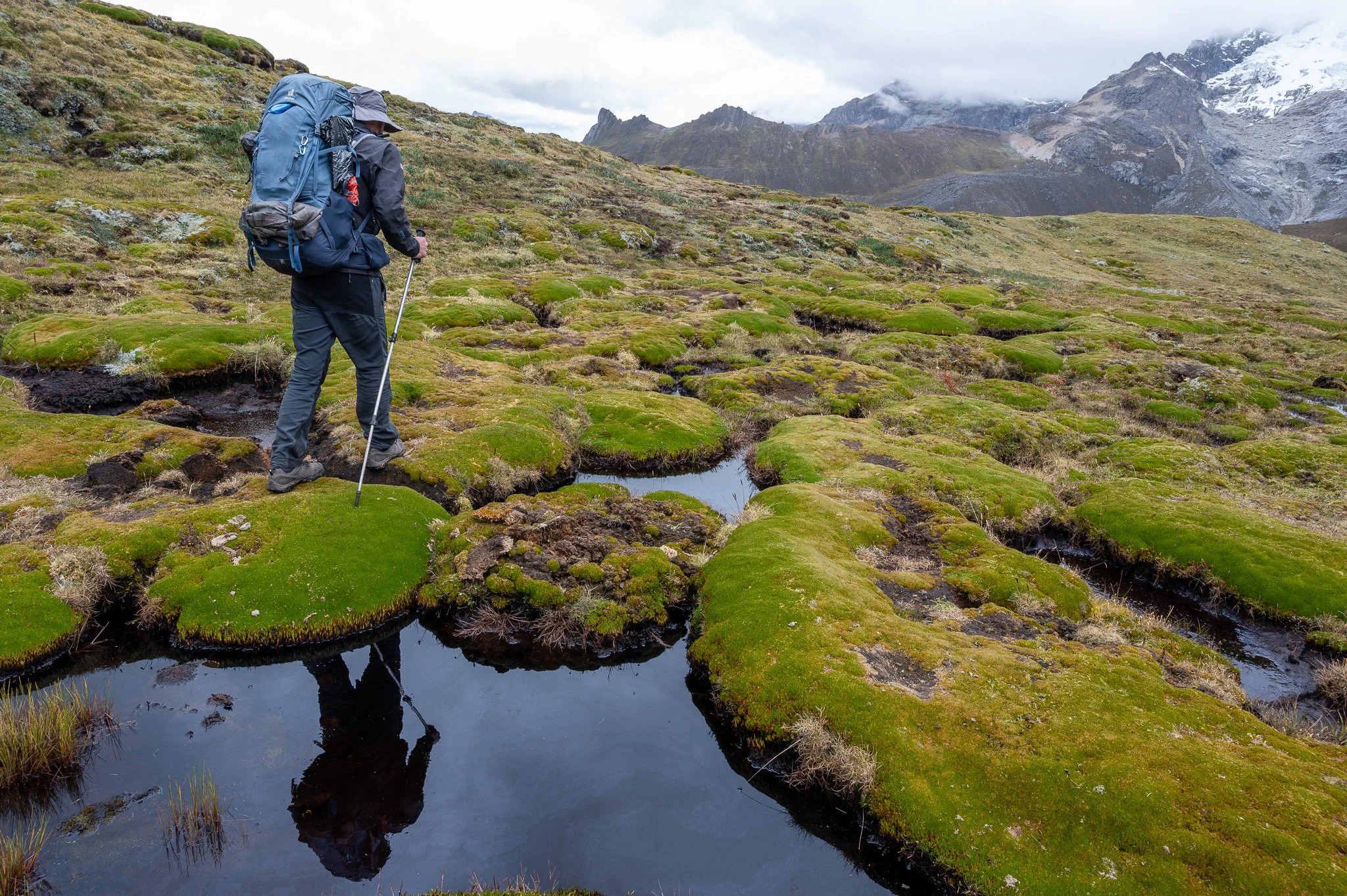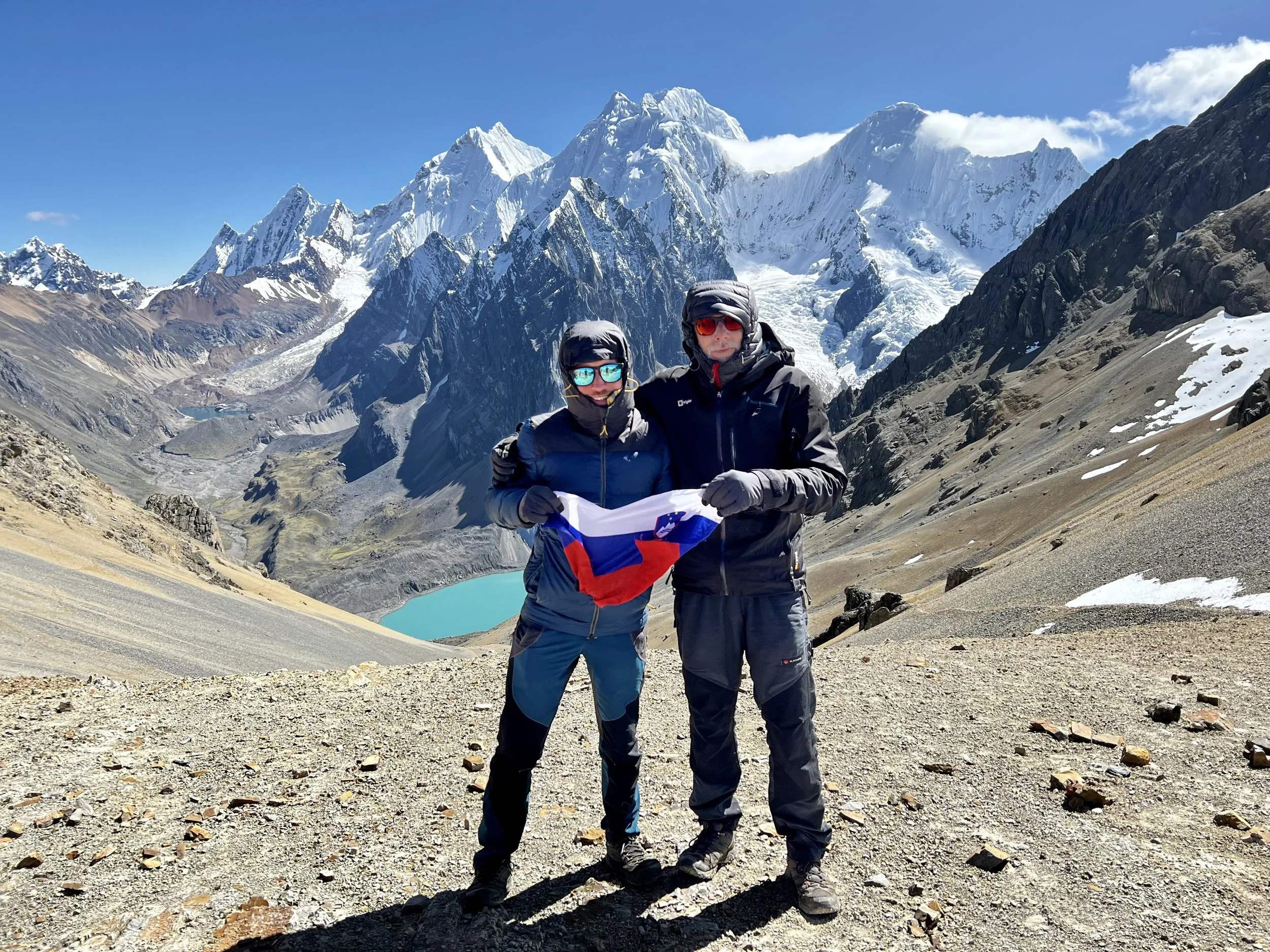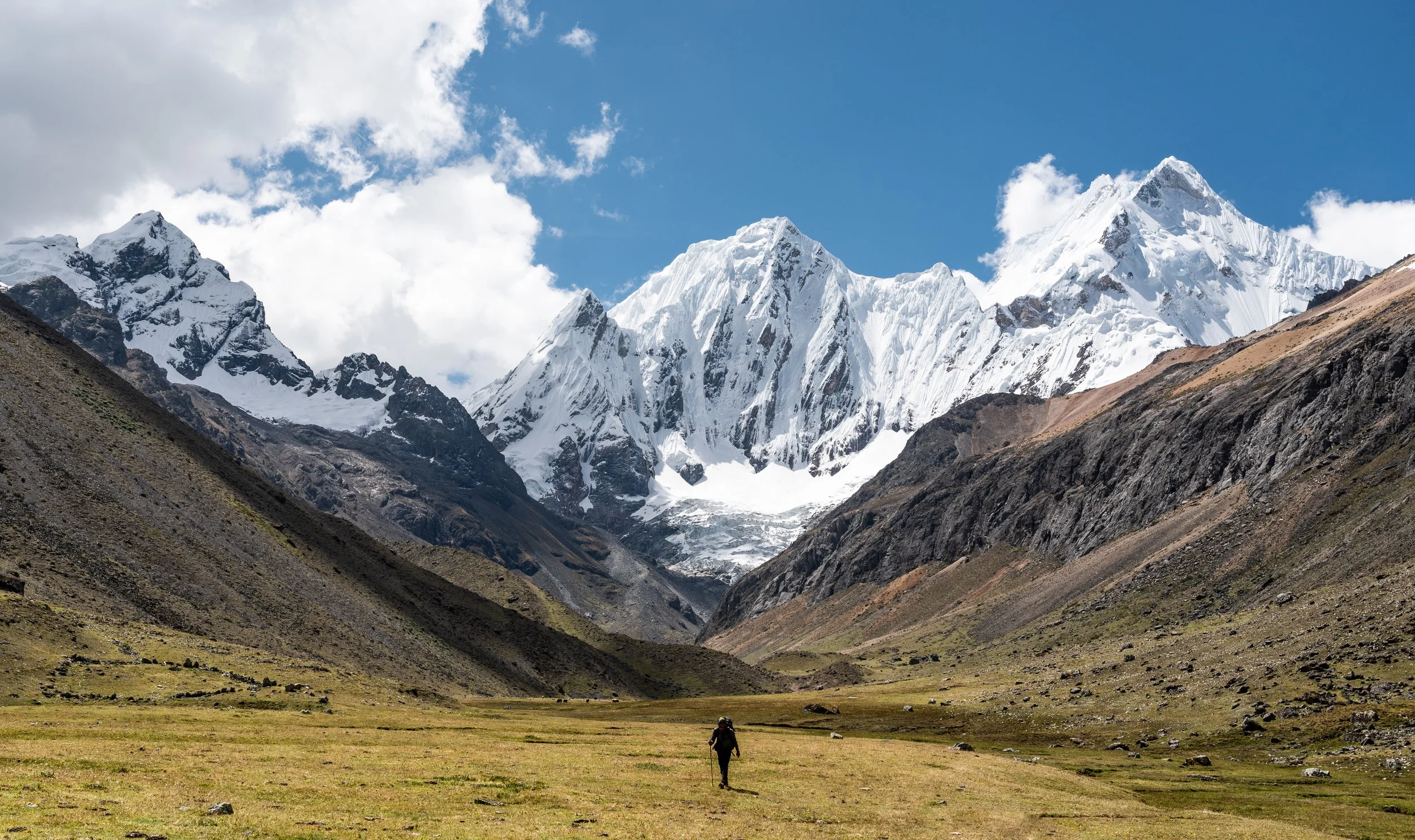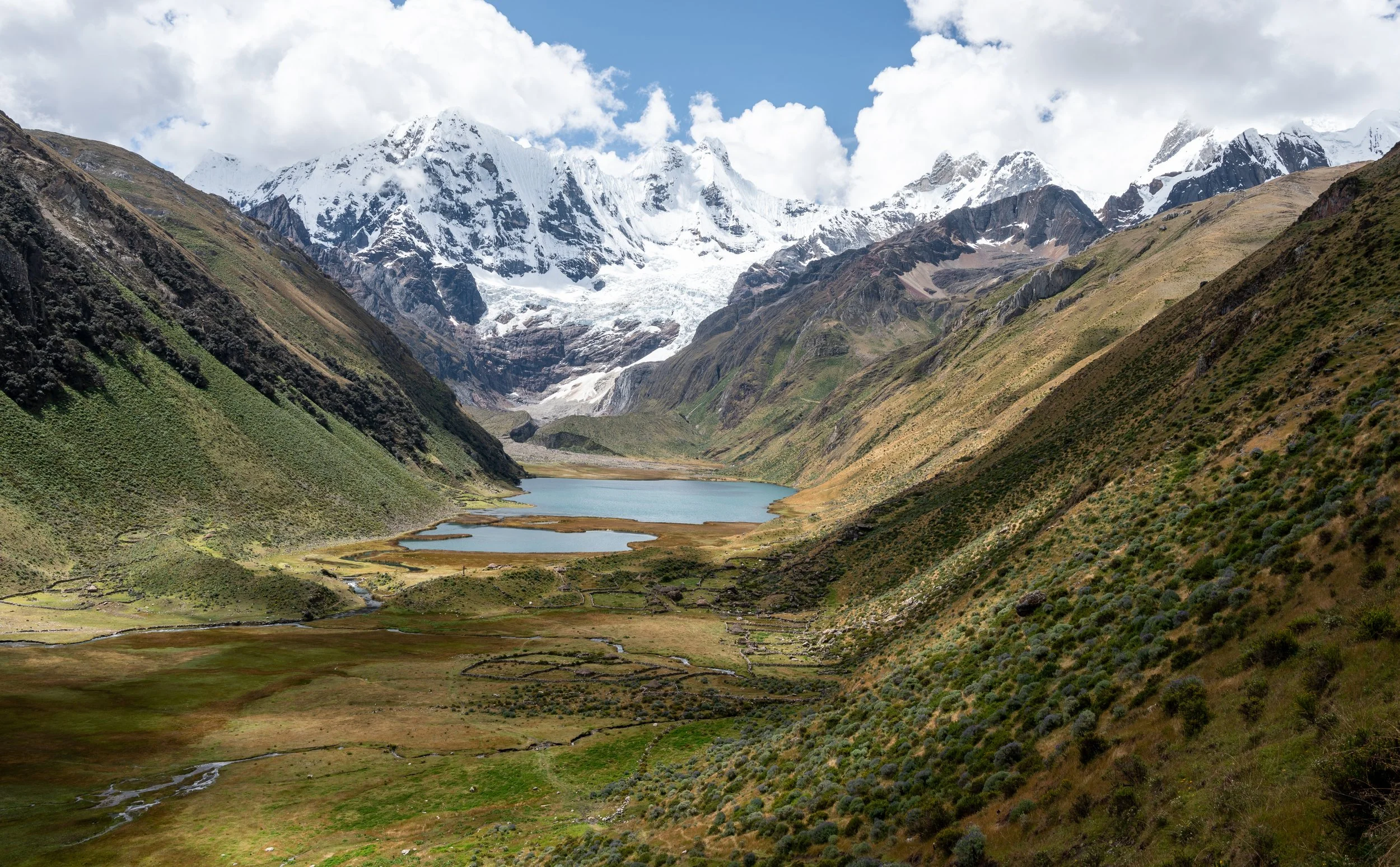HUAYHUASH CIRCUIT
discovering the mystical mountains of Peru
"One of the 10 most beautiful trails in the world." "Among the 20 places you have to go camping before you die."
These are just a few of the acclaims you'll find when researching the Huayhuash Circuit.
Huayhuash, the second-highest mountain range in Peru, is located near Huaraz, an eight-hour bus ride north of Lima. Spanning just 30 kilometres, it boasts seven peaks exceeding 6,000 meters above sea level, along with lesser peaks, glaciers, high-altitude passes, narrow valleys, and vibrant lakes. Its highest peak, Yerupajá, ranks as Peru's second mightiest, while Siula Grande’s imposing walls are known for one of the most dramatic survival stories in mountaineering history.
Protected since 2002, the area is designated as a reserved zone where local communities manage their lands as private protected areas. Although entry fees contribute directly to these communities, improvements in management and environmental education are needed, as issues such as litter in poorly maintained pits and inappropriate behaviour by some locals have been observed. Nonetheless, conversations with guides and community members inspire hope that Peru will preserve its breathtaking natural wonders for future generations.
I knew the Huayhuash Circuit was something special back in 2020, but the onset of the COVID-19 pandemic forced me to cancel my plans and hostel reservation in Huaraz, the base city for the mountain range. This time, the pandemic intersected with our plans again, shortening our journey through Patagonia (Por la Patagonia) due to the approaching harsh winter, but it also opened doors to new destinations. The Huayhuash Circuit topped our list, serving as the perfect finale to our Patagonian adventure—a cherry on the already sweet cake.
Given that the trail sits at elevations above 4,000 meters, with several passes exceeding 5,000 meters, proper acclimatization is crucial. The trail offers different length options and can be completed either with:
A. A guide and mules (where everything is included, and your gear is transported daily between camps) or
B. Solo/individually (where you carry all your camping gear, clothes, food, and navigate through valleys and passes on your own).
We chose the longest 10-day route, including additional less-explored areas (parts of the Alpine Circuit), and option B. After all, we were in South America for adventure, and no view is truly appreciated without a bit of effort. *Note: I recommend this option only to those with prior experience in self-guided long-distance trails, as the daily challenge of carrying a heavy backpack can be demanding.
Every drop of sweat and occasional struggle with low oxygen was worth it. Although the main trail is quite popular, the additional passes and valleys offered solitude beneath glaciated peaks, aside from the occasional territorial bull. The scenery was breathtaking, with each pass revealing new vistas of some of South America's highest mountains. The proximity to these grand peaks was awe-inspiring, making you feel as though you could almost touch the glaciers. I will definitely return to experience the mountain range from a different perspective—from the sky-rising mountains above.
OUR JOURNEY:
02.05. 2022 - 11. 05. 2022
Total distance walked: 120 km
Total ascent: 7,600 m
Total descent: 8,000 m
Official campsites, such as Janca shown in the image, are managed by local communities, and fees are required for using their land. Most sites offer basic facilities like toilets. However, if you’re hiking solo, wild camping is not strictly forbidden and can often lead to more secluded spots with better views (always practice the Leave No Trace policy!).
The views from Laguna Mitococha, our first campsite, and the surrounding valleys were spectacular. On our second day, we took the Alpine Circuit, passing over the small lake of Alcaycocha before rejoining the official trail. The Circuito Alpino, a higher-altitude route within the Huayhuash mountain range, offers closer proximity to the mountains, more scenic vistas, and occasional glacier crossings. For these glacier sections, equipment such as crampons and an ice axe is required.
The first view of the renowned Three Lakes—Qanrajancacocha, Siulacocha, and Quesillococha—unfolded as we descended toward Carhuacocha.
Crossing the bridge at the campsite near Carhuacocha, we were greeted with our first views of the highest peaks of the Cordillera Huayhuash.
Beneath the Siula Pass, the landscape was dotted with green mounds of yareta. This tiny plant, closely related to carrots, forms vast colonies to conserve heat and water at high elevations. Growing at a rate of just 1.5 cm² per year, some yareta colonies may be over 3,000 years old.
Morning views from the Huayhuash campsite offered stunning sights as the sun rose. With evening skies often overcast and afternoon storms being a common occurrence at this time of year, sunrises provided the only opportunity to witness the golden light sweeping over the mountain peaks.
Approaching the Portachuelo de Huayhuash pass, we were treated to views of the Trapecio, a towering peak rising to 5,653 meters above sea level, just behind us. Each day, the scenery seemed to grow more breathtaking.
Two Slovenians proudly promoting their country atop Paso Santa Rosa. Reaching the higher passes of the circuit was always a poignant moment—each ascent revealed new, awe-inspiring views, and fellow hikers, united by the challenge, celebrated their successes with handshakes and hugs.
The sun illuminated Sarapococha and cast a golden glow over some of Peru's most formidable peaks, including Siula Grande and Yerupaya. Setting up our tent by the basecamp of Siula Grande, right beside the lake, was a chilling experience. This location is famously tied to one of the greatest survival stories in mountaineering. In 1985, after Simon Yates and Joe Simpson made the first successful ascent of Siula Grande's West Ridge, they faced severe weather conditions during their descent. Joe Simpson, who suffered a severe leg injury, fell into a deep glacier crevasse. Believing Joe was dead, Simon Yates made a desperate decision to leave him behind. Against all odds, Joe survived for three days and nights, crawling through the glacier and rocky terrain to reach the camp where Simon was miraculously still waiting. This harrowing tale was immortalized in the book Touching the Void, which was later adapted into a film in 2003.
Paso Rosario was undoubtedly the highlight of the journey, standing as the highest pass at 5,100 meters above sea level. The views from this vantage point, with the majestic peaks of Peru such as Yerupajá, Siula, and Rasac nearby, were simply unbeatable. The sheer scale and grandeur of the surrounding mountains left an indelible impression, making it the most breathtaking part of our trek.
Marco, a new Italian friend who joined us for much of the trek, is seen descending through the scenic Caramarca Valley, with the towering peak of Rasac (6,017 m.a.s.l.) dominating the landscape. We reached this beautiful valley from Paso Rosario, navigating a mix of faint trails and off-road paths, zigzagging over gravel as we made our way down.
On our last night, we camped by the stunning shores of Lake Jahuacocha. The breathtaking view was so compelling that Marco decided to alter his plans and join us for the final stretch, crossing the Rondoy Pass the following day.






